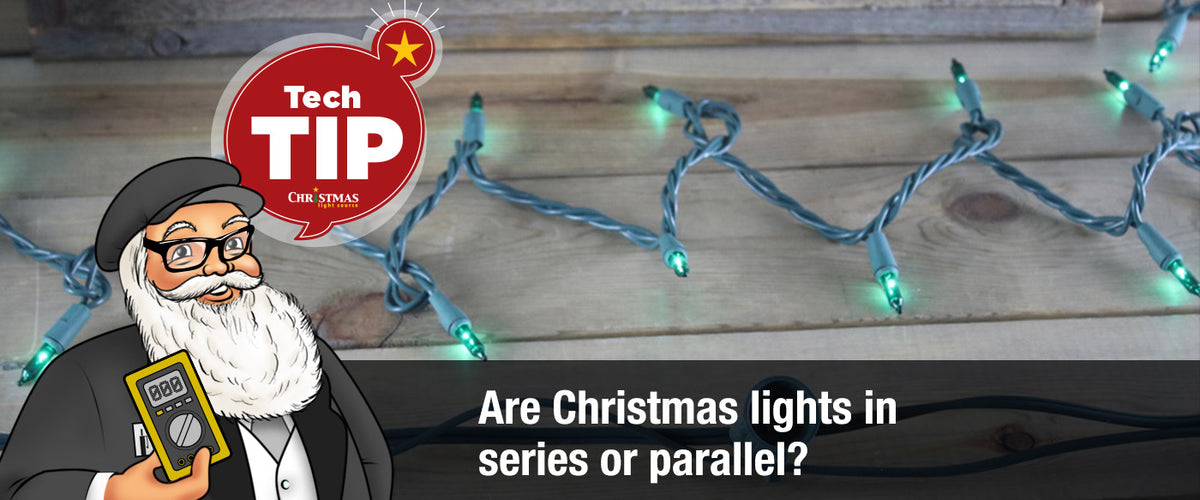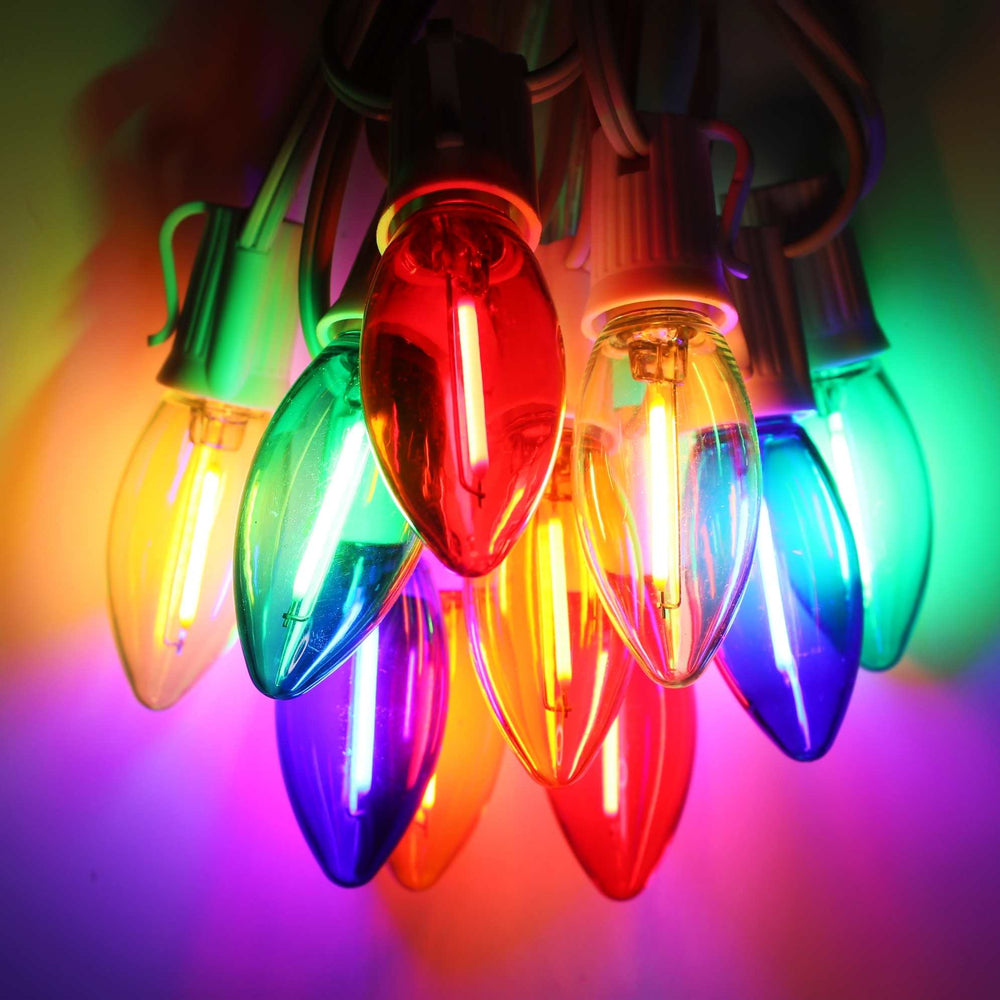

Short answer
Christmas lights are wired in both series and parallel configurations depending on their style and application.
Slightly longer short answer
Series Wiring
Traditional incandescent and LED Christmas tree mini lights wired on a 2 or 3-harness are wired in series. For reference, you can find them in categories like these:
Series wired light strings cannot be cut and if one bulb is removed the rest of the string will go out.
Parallel Wiring
Traditional C7 and C9 cords are generally manufactured with heavy duty wire and are wired in parallel. Parallel wired lights can be cut and terminated to fit and if one bulb is unscrewed and removed, the rest will stay lit. (Bulbs that have threaded bases are a clue you are working with lights that are wired in parallel.)
These are cords found in categories like this:
Here are a couple of circuit diagrams to explain the way the bulbs in each kind of string are tied together.

Here is what real strings look like next to each other.
Long Answer for The Folks Who Want More Information
What does the way Christmas lights are wired mean to me?
Light wired in series
Characteristics
- all the bulbs are wired in a single complete circuit with constant current
- If a bulb is pulled out of its socket, the other lights on the string will go out (in most cases)
- If a bulb "burns out" but is still intact in its socket with a small wire at the base undamaged then the rest of the lights will remain lit. Translation: if one bulb goes out, the rest stay lit, if a bulb is removed the rest of the light will go out until the bulb is replaced with a suitable replacement
- the string cannot be shortened or lengthened so extra lights must be rolled and tucked away
- sockets can’t be skipped but bulbs can be hidden with electrical tape or black paint
Troubleshooting steps if a light wired in series goes out:
- Check the fuse, if the fuse is blown you may have exceeded the maximum number of sets that can be run in series. Replace the fuse and reduce the number of lights on one arm of your project. Utilizing extra extension cords and splitters are go to's for this issue.
- Check to make sure the bulbs are all properly installed in the part of the light string that is out. Some bulbs can be half out of a socket, this breaks the circuit. Gently reinstall any loose or unseated bulbs.
- Check the wiring harness for damage, if the wires are damaged, harvest a few bulbs to act as replacements in other identical sets and discard the light string, it has served its purpose and should be replaced.
- During the Season, replace burned-out bulbs as soon as they go out since the same amount of current will be running through all the bulbs. In other words, the current for 100 bulbs will be running through 98 if two have burned out so there will be more current running through them. This higher-current state burns the bulbs out faster and if the dead bulbs are not replaced the rest will start a cascade of failure.
Lights wired in parallel
Characteristics
- All the bulbs are wired at constant voltage
- If a bulb is removed, the circuit isn’t broken
- LED and incandescent bulbs can be installed in the same circuit if that is the desired look
- the wire can be cut and properly terminated to fit a specific length
- sockets can be skipped and wrapped with a couple turns of electrical tape
Troubleshooting steps if a light wired in parallel goes out:
- Check the fuse and replace it if it is blow. Reduce the number of bulbs or length of light string before plugging into an outlet if the fuse has been blown. If you make adjustments and the fuse blows again, then there may be a break in the wiring. If you have questions about how much current your light string can take, touch base with an electrician. He or she can confirm that the wattage of your bulbs does not exceed the rated current for the cord. Also confirm that your cord length (of a 10-amp 18 AWG wire) is not longer than 250 feet for 18 AWG wire. Twenty-two gauge cords must not be connected end-to-end in a quantity greater than outlined in its specifications.
- Check the wiring harness for damage, squirrels and attic heat during storage can take a toll. If a section is damaged, repair the string by splicing in a repair using gilbert plugs or have an electrician make that repair for you.
- Visually examine the insulation of the wiring, if it is uniformly degraded and the cord has seen better days, pull the bulbs and replace with a new cord
This article was heavily edited and re-released on May 13, 2020


